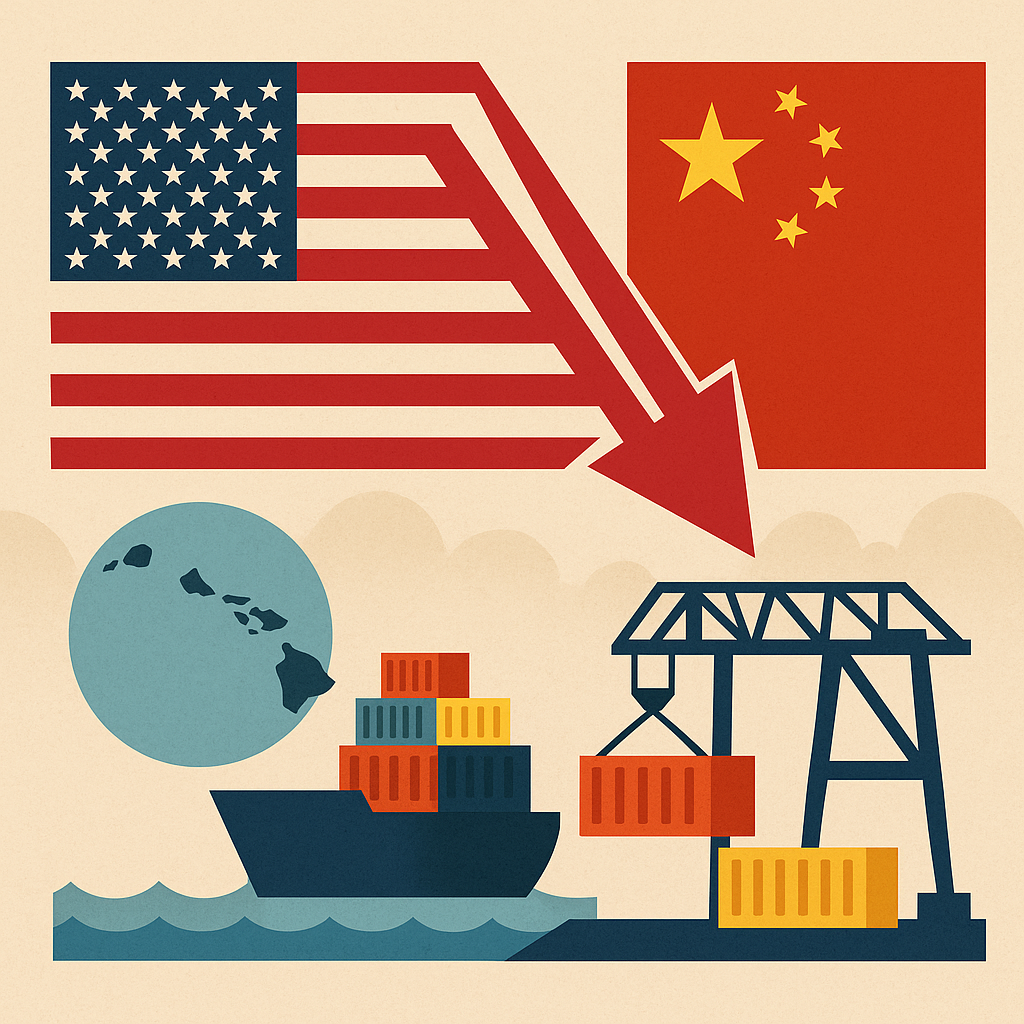
The U.S.–China tariff situation continues to evolve. While a 90-day reduction in tariff rates was announced earlier this year, this appears to be a temporary pause rather than a long-term resolution. Businesses in Hawaii, particularly those involved in logistics, should continue to plan for uncertainty.
The Latest Developments
In early 2025, the U.S. lowered tariffs on Chinese goods from 145% to 30% as part of a 90-day agreement. China responded by reducing its own tariffs on U.S. goods from 125% to 10%. This has led to a temporary surge in shipping volume from China to the U.S. — container bookings reportedly increased by 300% during this window (source).
However, this agreement does not address the underlying trade conflict. According to Reuters, there’s no indication of long-term de-escalation, and both sides remain far apart on several key issues.
Why This Matters to Hawaii
Hawaii relies heavily on imported goods. When tariffs are high, costs go up — not just for mainland importers, but for every business in the local supply chain. The Chamber of Commerce Hawaii reported that around 70% of local businesses have already felt the impact of these tariffs (source).
As a logistics company based in Honolulu, we’ve seen this firsthand. Higher costs, more unpredictable delivery timelines, and increased pressure on warehousing are now part of the equation.
What We’re Seeing in the Field
- Rising costs across all forms of shipping and storage
- Lead time variability, especially for freight originating from Asia
- Inventory challenges, as businesses either delay ordering or attempt to stock up in advance
This is putting more strain on local infrastructure and making it harder to offer reliable timelines to customers.
What Businesses Can Do
If your operations depend on mainland or international freight, especially from Asia, now is the time to revisit your supply chain strategy. Here are a few things worth considering:
- Diversify suppliers where possible. Vietnam, Mexico, and the U.S. mainland are potential alternatives to China.
- Reassess your inventory approach — whether that means increasing safety stock or reducing over-ordering, depending on your space and capital situation.
- Use real-time tracking tools to manage delays more effectively.
- Prioritize partnerships with local vendors and service providers where feasible.
Looking Ahead
The 90-day truce expires soon. If no new agreement is reached, tariffs will likely increase again, possibly without much warning. Businesses in Hawaii should not assume that the current tariff rates will hold.
We’ll continue to monitor the situation and share updates. If you’re a business looking for guidance on how to adapt your logistics model, feel free to reach out.

